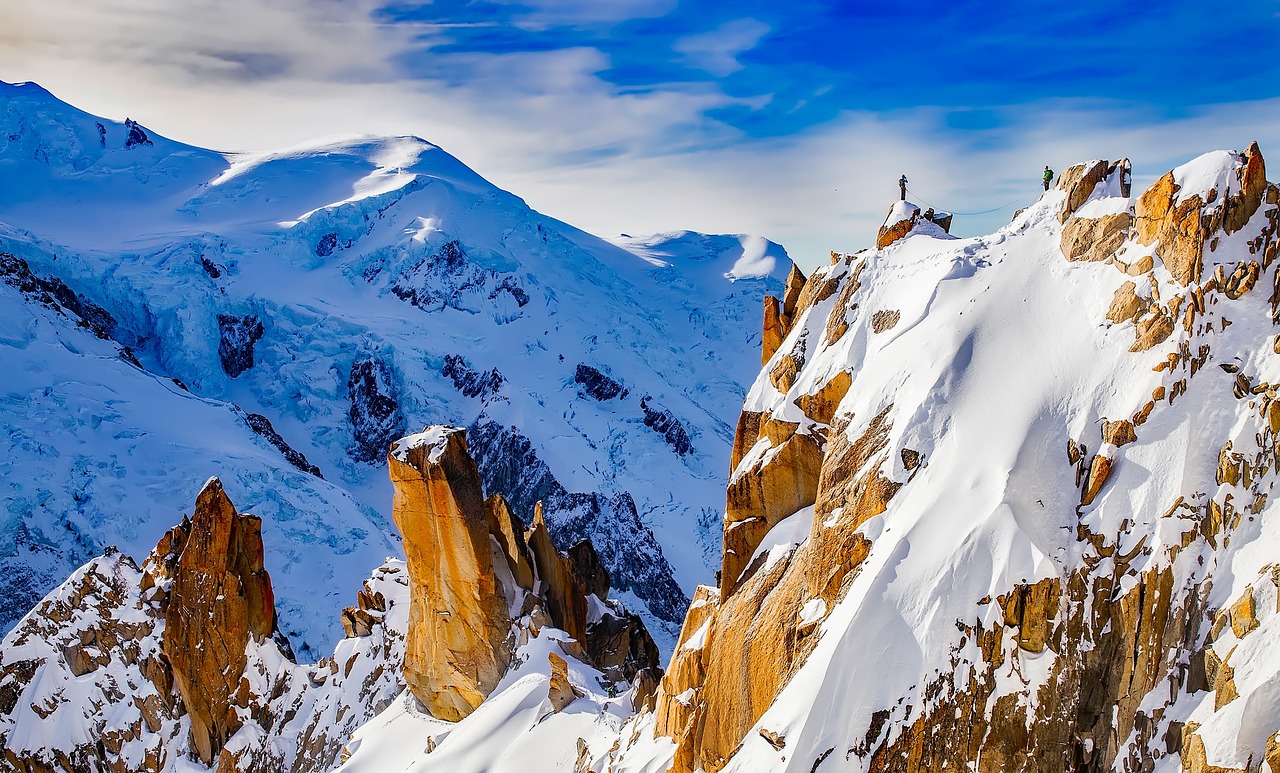At the base of Mont Blanc, within the French Alps, stands a statue commemorating Horace Bénédict de Saussure and Jacques Balmat, pioneers in their 1887 climb of the peak. Nearby, the town of Chamonix, famed globally for its mountainous heritage and glaciers, now grapples with the tangible impacts of global warming.
Widely recognized as the cradle of mountaineering and the site of the 1924 inaugural Winter Olympics, Chamonix, fondly known as “Cham” among its denizens, is witnessing its beloved Montenvers glacier recede alarmingly. Estimates suggest that its renowned ski slopes may be functional for only another three decades.
Yet, climate challenges aren’t novel for mountain enthusiasts. Didier Tiberghien, of Chamonix’s esteemed Compagnie des Guides, remarks that these concerns were in conversations a quarter-century ago. The need now is for meticulous and forward-looking adaptation.
Echoing this sentiment, Chamonix’s tourism sector and hospitality sector largely represented by its native populace, is united in harmonizing environmental conservation with the thrill of mountain exploration.
Towards Renewal and Diversification
Montenvers, with its yearly footfall of 350,000 visitors, is undergoing transformative endeavors to invigorate its legendary Montenvers-Mer de Glace location. The dual objective is to spotlight the grandeur of this mountain gateway and accentuate its climate vulnerability. Renovating the historic hotel and train, along with new additions like a glaciorium and cable car, are integral to these initiatives.
Parallelly, Chamonix’s focus has shifted to broadening its tourist attractions. The renowned Montenvers ice cave, re-sculpted annually, showcases the glacier’s inner majesty. Added to this, a proposed museum circuit will immerse tourists in local traditions and history.
A surge in tourism, especially during summer, emphasizes the necessity of instilling in visitors a respect for the environment and an awareness of mountain dangers. Both Compagnie des Guides and La Chamoniarde, a local organization, have observed this rising trend of uninformed exploration.
Chamonix, while thriving on tourism, is wary of unchecked growth. As Nicolas Durochat of the town’s tourism bureau asserts, the well-being of residents is paramount. Consequently, real estate developments are curtailed to retain the town’s authentic essence.
Sustainable Visions
Responding to changing terrains, entrepreneurial locals like Cathy Simond have innovated. When her Mottets bar’s slope access became challenging due to glacier melt, she introduced unique mountain-view tents for tourists, maintaining the venue’s intimate charm.
Recognizing the carbon footprint of tourism, Chamonix’s Compagnie des Guides has been proactive in gauging and cutting emissions. The town also prioritizes proximate tourism over distant travelers.
However, balancing environmental concerns with economic necessities is intricate. The Compagnie du Mont-Blanc, responsible for Chamonix’s ski lifts, serves global tourists in off-peak times. Their stance is that many of these travelers are on European tours, and Chamonix forms just a fragment of their itinerary.
In sum, as Chamonix ambitiously strides toward reconciling tourism with eco-conservation, Didier Tiberghien offers a fitting metaphor: “Climbing Mont Blanc isn’t a two-step process. It demands preparation and versatile strategies.”






